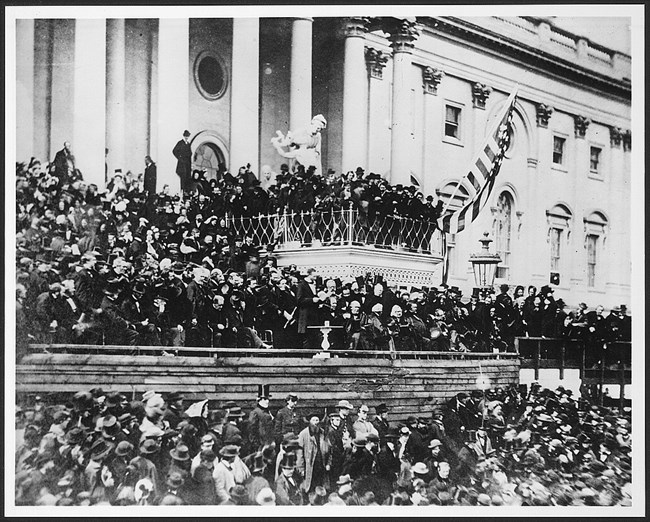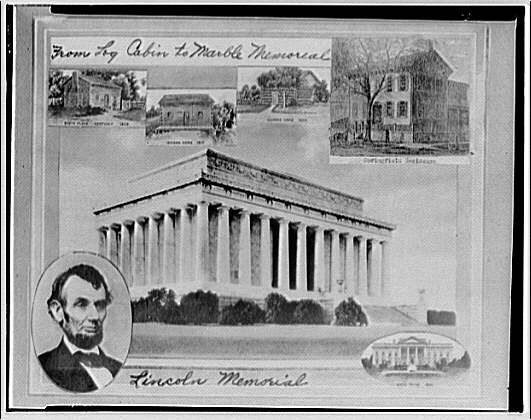Last updated: August 31, 2021
Article
Lincoln's Second Inauguration

Library of Congress
As the country entered its fourth summer of civil war in 1864, Abraham Lincoln was trying to win a second term as president of the United States. With a war weary public eager for peace, it appeared that summer he might lose reelection. His fortunes changed dramatically in a matter of months. Late in 1864, major Union military successes on the battlefield persuaded many Americans for the first time that there was an end in sight to the Civil War. Lincoln was re-elected in a landslide that few could have predicted in the summer of 1864.
More sacrifice and loss remained for soldiers and citizens, but throughout 1864 Abraham Lincoln started to look ahead to a post-Civil War America. His vision was evident in his second inaugural address delivered on March 4, 1865. Along with the Gettysburg Address, it is routinely cited as one of the more memorable historical speeches ever delivered.
One of the largest inaugural crowds to that point braved non-stop rain and fierce winds as they assembled on the east side of the U.S. Capitol. As the fifty-six-year-old president rose from his chair to speak, the clouds parted, and the sun shined down on the ceremony. It was such an unexpected occurrence that witnesses to the event would comment on the sudden change in weather for years to come.

Library of Congress
Many Americans had lost loved ones and property since April 1861, and some wanted President Lincoln to exact retribution on the Confederate states for bringing on the war. There was much speculation that this spirit for revenge might inform Lincoln’s approach to Reconstruction. Partisans, however, would find little appeal in Lincoln’s second inaugural address. The president squarely placed blame on both the North and South for allowing slavery to continue for so long, and for choosing to resolve the matter through military conflict.
Lincoln’s restorative vision for the nation would be highlighted in an unforgettable conclusion to his address. Abraham Lincoln proclaimed, “With malice toward none, with charity for all, with firmness in the right as God gives us to see the right, let us strive on to finish the work we are in, to bind up the nation’s wounds, to care for him who shall have borne the battle and for his widow and his orphan, to do all which may achieve and cherish a just and lasting peace among ourselves and with all nations.” Today these words live on enshrined within the walls of the Lincoln Memorial, and remain a standard by which other presidencies are measured.
